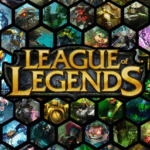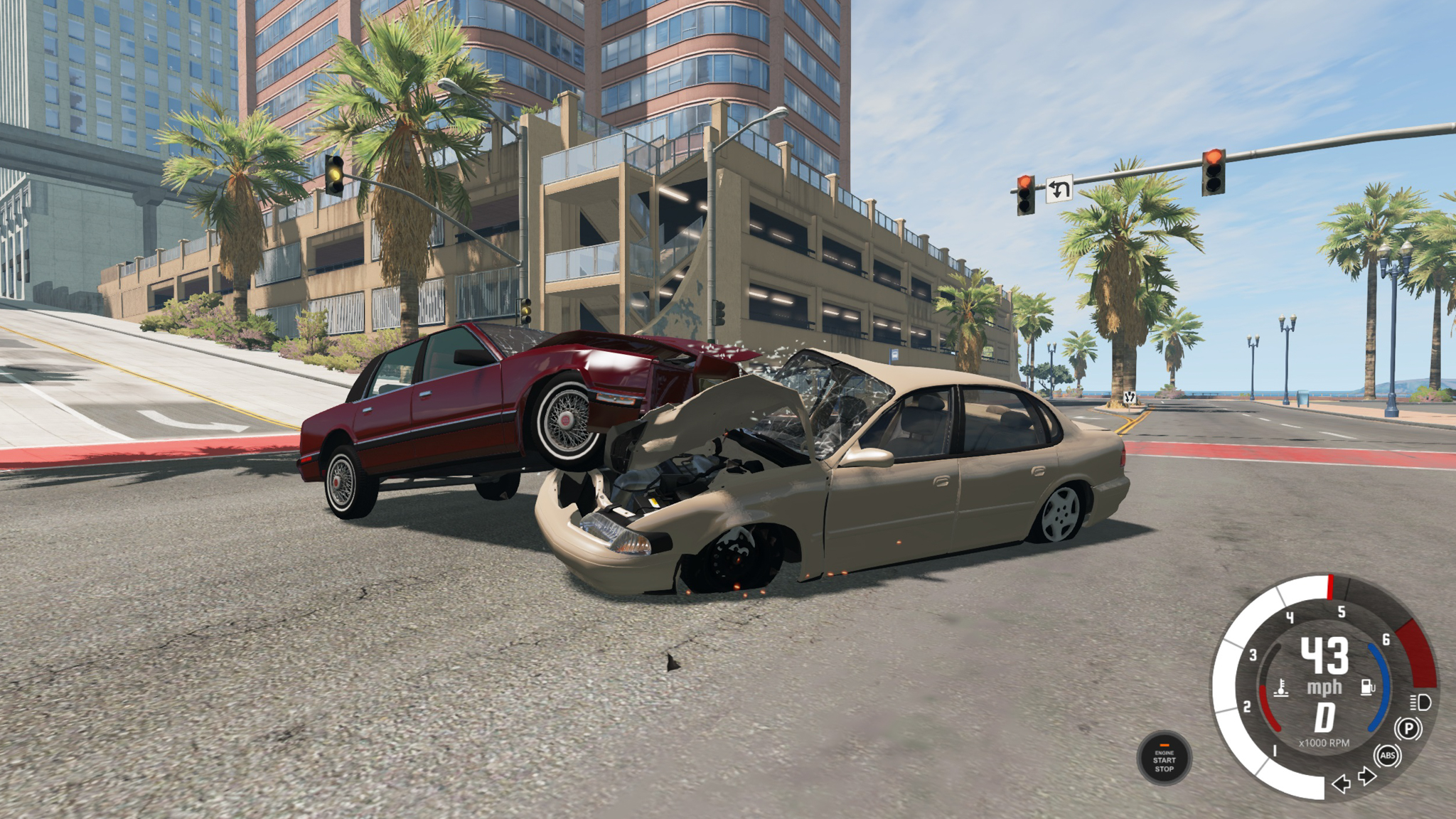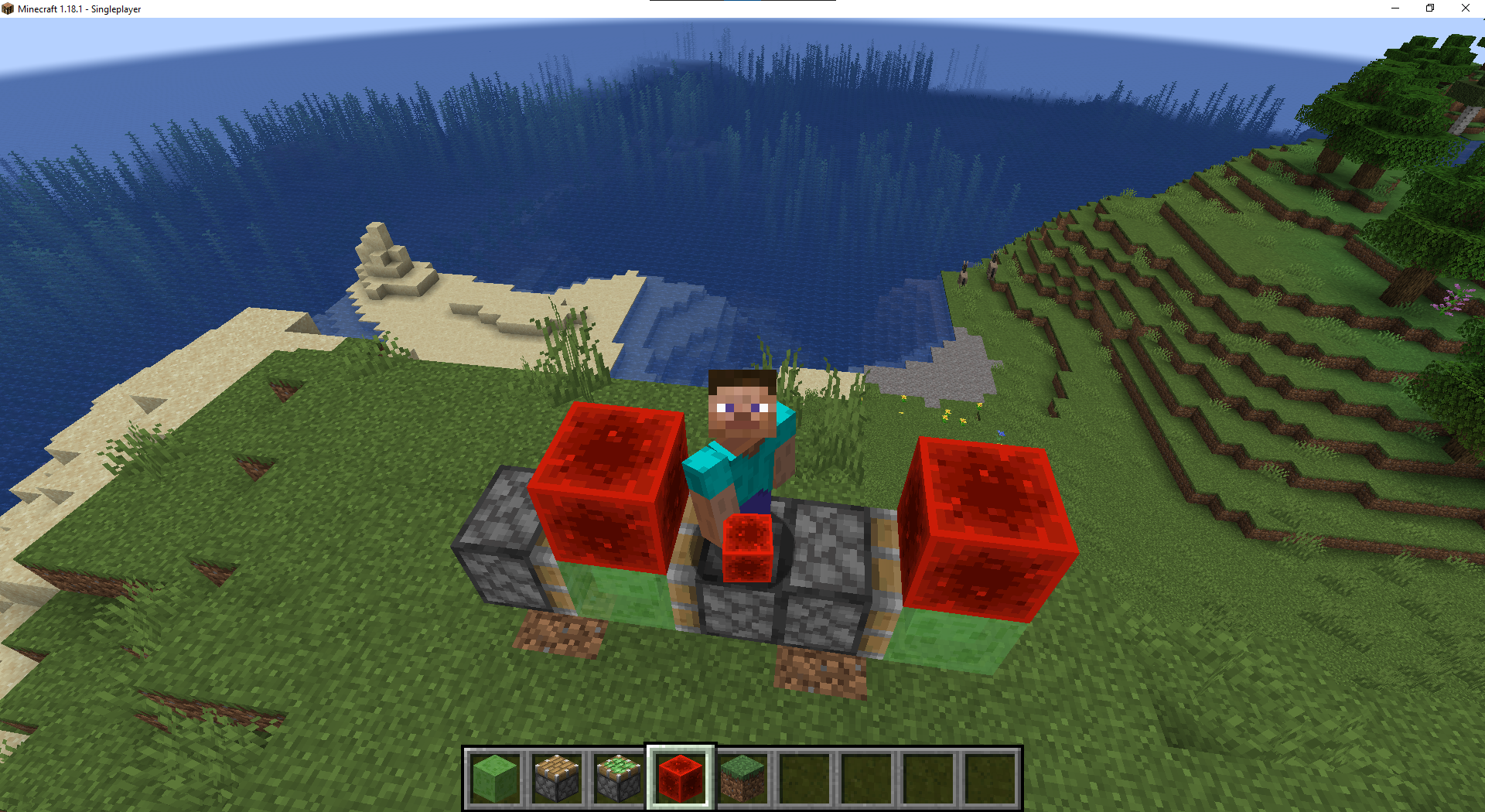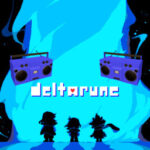Popular Now
Deltarune, developed by Toby Fox, stands as one of the most anticipated indie RPG projects in recent years. While many players focus on its narrative continuity with Undertale, one aspect that deserves a focused, detailed analysis is its battle system. The game blends turn-based RPG mechanics with bullet-hell dodging elements and introduces new systems like TP (Tension Points), dual-character commands, and non-lethal conflict resolutions on a larger scale. This article will provide a step-by-step exploration of how the battle system in Deltarune evolves from Chapter 1 to Chapter 2, analyzing each major mechanic introduced and how they reshape player engagement.
THE FIRST ENCOUNTER: TUTORIAL BATTLE WITH RUDINN
When players first enter the Dark World, their introduction to combat begins with a battle against Rudinn. This fight works as a foundational tutorial, teaching players the basic structure of Deltarune battles.
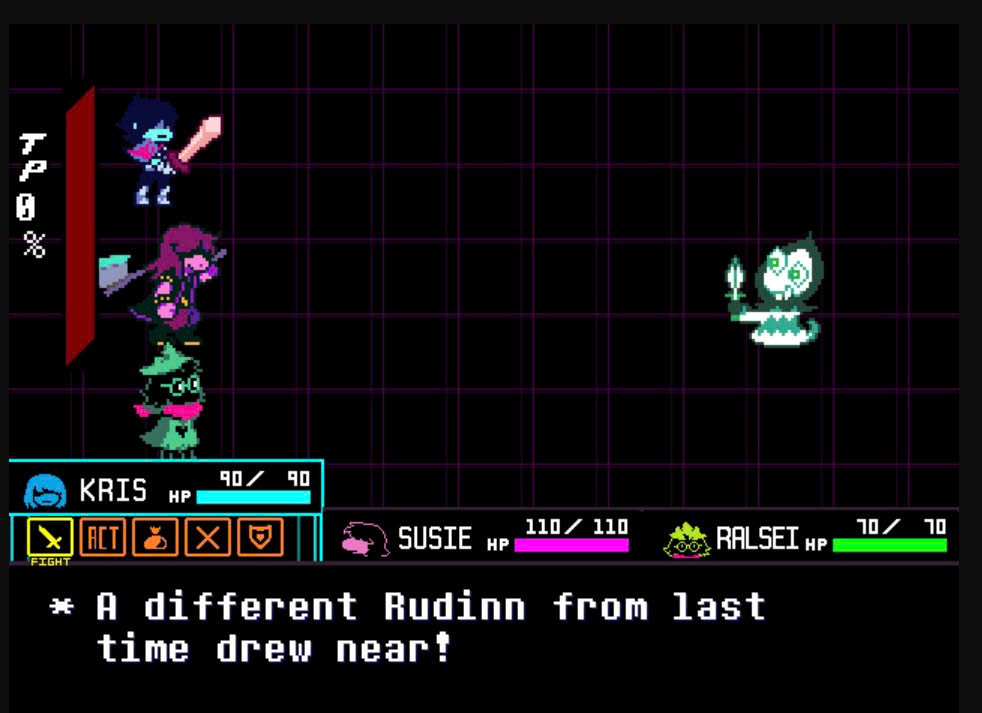
In this phase, players learn to choose between "Fight," "Act," "Item," and "Spare." Unlike Undertale, where combat was solo-focused, Deltarune introduces a party system, making players control multiple characters' actions each turn.
The bullet-dodging mini-game during enemy attacks also returns, but with more refined hitboxes and patterns that reward attentive play. The importance of TP starts to reveal itself here, setting the stage for more advanced tactics.
UNDERSTANDING THE TENSION POINT (TP) SYSTEM
The TP system is one of the most significant changes from Undertale's combat. It incentivizes risky play and defensive positioning.
Players gain TP by grazing enemy attacks, guarding, or through certain abilities. This resource is then spent on spells, healing, or powerful attacks.
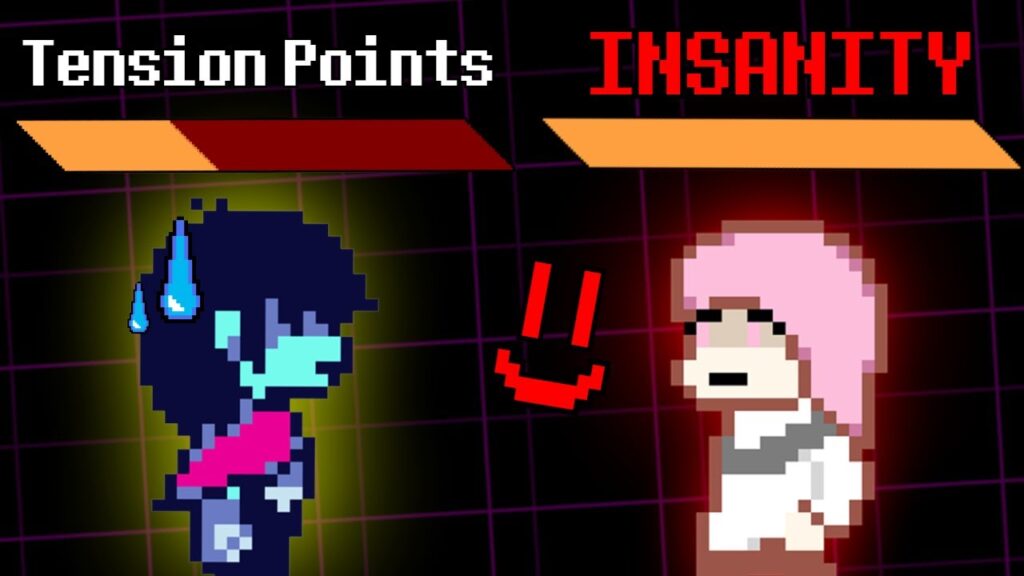
This system creates a natural risk-reward loop. Skilled players who dare to flirt with danger by closely avoiding enemy bullets can build TP quickly and unleash more devastating or helpful spells during their turn.
ACTING AS A TEAM: MULTI-CHARACTER STRATEGIES
Unlike the solo combat of Undertale, Deltarune requires the coordination of a full party, usually consisting of Kris, Susie, and Ralsei.
Managing each character’s role becomes crucial. Kris often acts as the flexible unit, Susie leans toward raw damage, while Ralsei supports with healing and pacification spells.
This multi-character approach encourages tactical thinking. For example, while Susie may deal damage automatically, players can guide her with specific commands to act non-lethally, creating balance between aggression and mercy.
BULLET-HELL EVOLUTION: ENEMY ATTACK PATTERNS
Enemy attack patterns in Deltarune are a significant step up in complexity from Undertale.
In Chapter 1, players face relatively simple bullet patterns, but Chapter 2 introduces varied attacks, multi-phase bullet waves, and enemies that force movement-based puzzles within combat.
This variety keeps players on their toes and ensures that each enemy encounter feels unique. It also pushes players to learn enemy-specific behaviors, enhancing replayability.
INTRODUCING SPELLS: RALSEI AND SUSIE’S UNIQUE ABILITIES
Spellcasting in Deltarune opens up new dimensions of strategy.
Ralsei’s spells include healing abilities and "Pacify," which ends fights with weakened enemies. Susie, by Chapter 2, unlocks offensive spells like "Rude Buster."
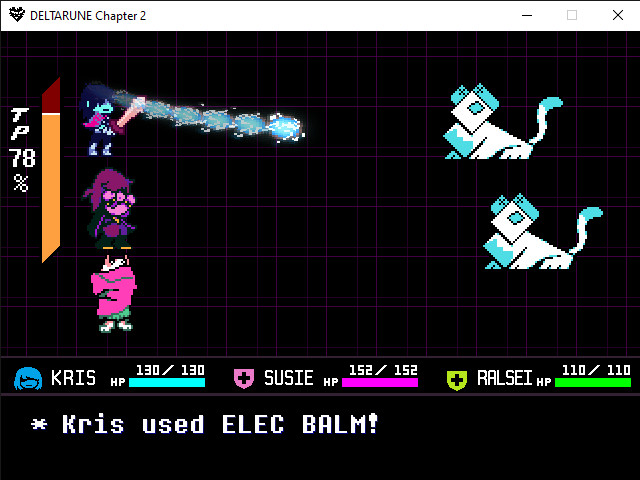
Spells cost TP, forcing players to constantly juggle between building tension and spending it wisely. Choosing when to attack, heal, or pacify becomes the crux of mid-game battles.
THE ROLE OF MERCY AND NON-LETHAL COMBAT CHOICES
Deltarune continues Undertale’s theme of non-lethal combat, but it expands the system.
Now, players often need to fill a "Mercy Meter" for each enemy. Acts like "Warning," "Compliment," or "Pacify" stack to increase Mercy percentage.
This gradual build-up means that sparing foes often requires multiple actions across several turns. It encourages thoughtful sequencing of moves, especially in multi-enemy battles.
BOSS FIGHTS: COMPLEXITY AND MECHANICAL VARIETY
Boss battles in Deltarune bring the combat system’s complexity to its peak.
In Chapter 1, Lancer and Susie’s team battle showcases multi-character targeting and bullet-dodging coordination. In Chapter 2, fights like Queen and Spamton Neo introduce phases where bullet patterns change drastically mid-fight.
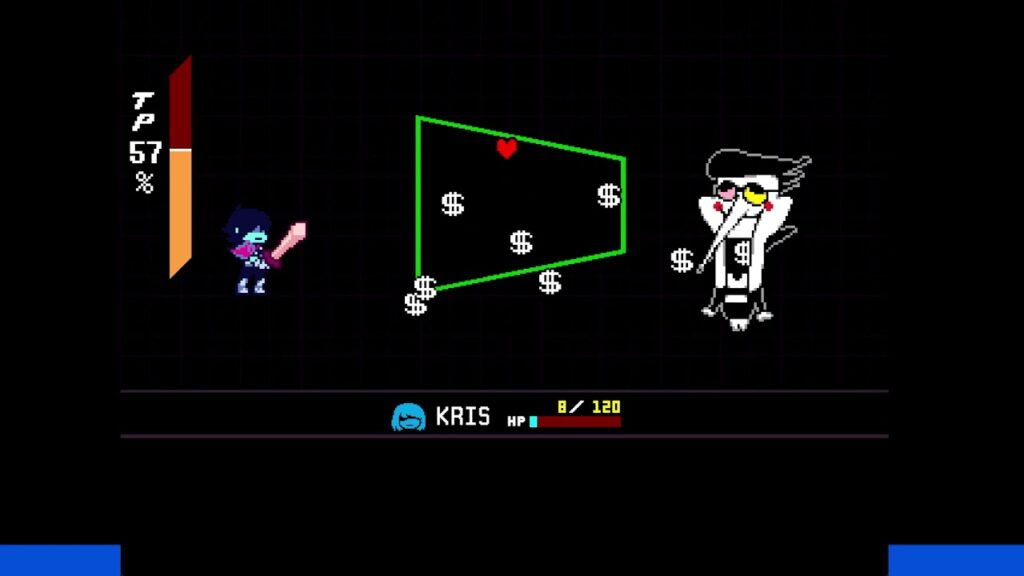
Key boss mechanics include:
-
Environmental hazards during bullet phases
-
Time-limited decisions for dodging
-
Multi-character enemy targets
These fights often blend humor, narrative, and mechanical stress, making them unforgettable.
TP MANAGEMENT AND HIGH-LEVEL STRATEGY
By Chapter 2, expert players learn to master TP management for advanced strategies.
There’s a growing reliance on precise TP control. High-level players time their dodges for grazing to max TP at critical moments.
Popular strategies include:
-
Deliberate grazing to fuel "Rude Buster"
-
Saving TP for emergency healing
-
Triggering "Pacify" at the last second
These small optimizations separate casual playthroughs from challenge runs.
CHAPTER 2’S ADVANCED MECHANICS: TENSION GAUGE AND SOUL TYPES
Chapter 2 introduces new mechanics like the "Tension Gauge" and different SOUL colors.
The Tension Gauge visually represents TP build-up, making it easier for players to track energy for spells. Additionally, different SOUL types appear in specific battles, altering how the bullet-dodging phase plays out.
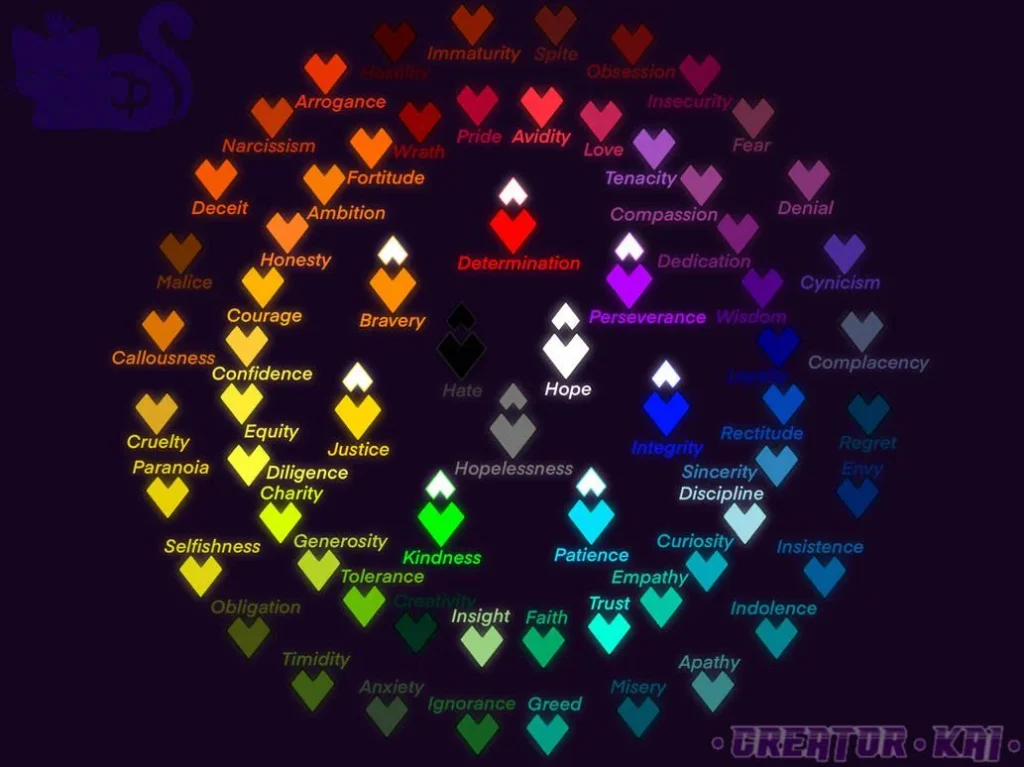
For example:
-
Red SOUL: Standard movement
-
Green SOUL: Healing mode with shield mechanics
-
Blue SOUL: Gravity effects during dodging
These variations inject freshness into combat, requiring adaptive gameplay in each encounter.
IMPACT ON PLAYER EXPERIENCE AND REPLAYABILITY
The evolving battle system dramatically increases Deltarune's replay value.
Players often replay chapters to test new strategies, attempt no-hit runs, or experiment with different pacifist and aggressive routes.
The blend of bullet-hell, turn-based mechanics, and RPG team management makes each playthrough unique. Whether it's mastering Susie's spells or optimizing TP for tricky bosses, the battle system remains a constant, evolving challenge.
Conclusion
Deltarune’s battle system stands as a major leap forward from Undertale, both mechanically and thematically. Its blend of real-time dodging, turn-based tactics, and layered resource management creates a unique combat experience that rewards both casual and hardcore players. From the simple tutorial fight against Rudinn to the complex multi-phase boss battles in Chapter 2, each step of Deltarune's journey tests the player's adaptability, strategy, and timing. As future chapters release, fans can expect even more innovations that will push this system to greater heights.

